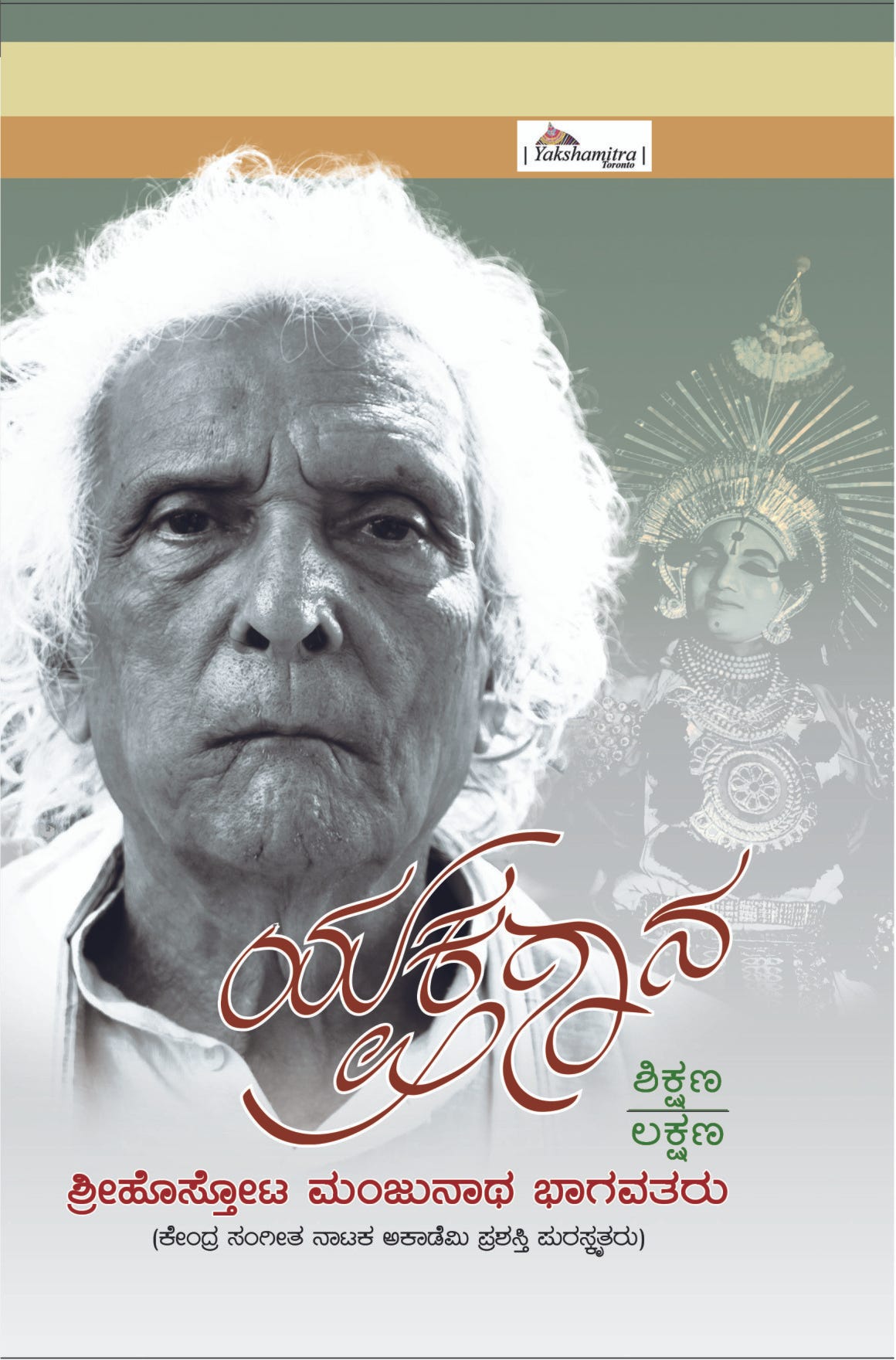2019 Ragu Kattinakere.
The primary literary reference mentioning "Havyaka" is the "Uttara Sahyadri Khanda." However, this text is considered a later addition (prakshipta) to the "Sahyadri Khanda," with a likely date of composition no earlier than the 18th century. This late appearance of the term raises questions about its antiquity.
Two prominent Havika scholars, Sediyapu Krishna Bhatta (a researcher in C.Sc., Yakshagana, and Ancient India) and Nadahalli Ranghanatha Sharma, have offered compelling insights. Sediyapu, in his detailed article "Dravidagauda Vichara" (published in "Vichaara Prapancha"), recounts discussions with a Havika Mutt seer, indicating that the use of "Havyaka" is relatively recent, dating back approximately 100 years from around 1990. Sediyapu argues that "Havika" (or "Haveeka") is the original, authentic term, not a corrupted form (apabhramsha) of "Havyaka." He proposes a linguistic derivation from "Ahichatra Brahmanah" to "Ahika" and finally to "Havika/Haveeka." Nadahalli Ranghanatha Sharma, while acknowledging the linguistic plausibility of this derivation, considered it somewhat speculative. While Sharma accepted the name "Havyaka" in his foreword to H.M. Thimmappa's "Havyakara Ithihas," he rejected the theory that it originates from "Havya-Kavya."
Historical records, including Mysore, Coorg, and Bombay gazettes and other British-era documents, consistently use "Havika," "Haiga," or "Haveeka" until 1929. The Mysore gazette of 1929 appears to be the first documented use of "Havyaka." This raises the question of why Sanskrit-versed seers of Havika mutts would exclusively use a supposedly "mispronounced" form for centuries.
Numerous ancient inscriptions refer to Brahmins brought to Kuntala as "Ahichatra Brahmanah." The stone inscription at the Kaitabeshwara temple in Anavatti/Kubatoor (Anavatti is believed to be the ancient Kuntala nagara) exemplifies this. Literary texts like "Brahmanotpatti Marthanda" also mention "Ahichatra Brahmanah." The geographical proximity of sites with inscriptions dating from the 5th to 12th centuries AD (Banavasi, Soraba, Elase, Talagunda, Anavatti, Kuppagadde) to present-day Havika settlements further supports a potential connection.
While other theories exist, such as derivations from "Haigunda" or "Haiva desha," they currently lack sufficient supporting evidence. The "Havaya-Kavya" origin has been explicitly rejected by Ranghanatha Sharma.
It is crucial to acknowledge that a definitive link directly connecting the "Ahichatra Brahmanah" of the inscriptions to the modern Havika community requires further investigation. Establishing this link would significantly strengthen the "Ahichatra Brahmana" origin theory. Despite this gap, the available linguistic and historical evidence strongly suggests that "Havika" (or "Haveeka") is the original and authentic name of the community, potentially derived from "Ahichatra Brahmanah." Further research is needed to solidify this connection and explore other potential origins, such as the "Haigunda" theory, which will be addressed in future work. Until then, the Havika community can take pride in its rich heritage and commitment to knowledge.
Kannada Translation by Gemini:
ಹವ್ಯಕ ಎಂಬ ಪದದ ಮೂಲದ ಕುರಿತು ವಿದ್ವಾಂಸರಲ್ಲಿ ಚರ್ಚೆಗಳು ನಡೆದಿವೆ. ಭಾರತದ ಒಂದು ಬ್ರಾಹ್ಮಣ ಸಮುದಾಯವನ್ನು ಗುರುತಿಸಲು ಈ ಪದವನ್ನು ಬಳಸಲಾಗುತ್ತದೆ. ಈ ಲೇಖನವು "ಹವಿಕ" ಎಂಬ ಪದದ ವ್ಯುತ್ಪತ್ತಿಗೆ ಸಂಬಂಧಿಸಿದ ಎರಡು ಮುಖ್ಯ ಸಿದ್ಧಾಂತಗಳನ್ನು ಪರಿಶೋಧಿಸುತ್ತದೆ, ಗೌರವಾನ್ವಿತ ವಿದ್ವಾಂಸರ ಕೃತಿಗಳು ಮತ್ತು ಲಭ್ಯವಿರುವ ಐತಿಹಾಸಿಕ ದಾಖಲೆಗಳನ್ನು ಆಧರಿಸಿದೆ.
"ಹವ್ಯಕ" ಪದವನ್ನು ಉಲ್ಲೇಖಿಸುವ ಪ್ರಾಥಮಿಕ ಸಾಹಿತ್ಯಿಕ ಉಲ್ಲೇಖವೆಂದರೆ "ಉತ್ತರ ಸಹ್ಯಾದ್ರಿ ಖಂಡ." ಆದಾಗ್ಯೂ, ಈ ಪಠ್ಯವನ್ನು "ಸಹ್ಯಾದ್ರಿ ಖಂಡ" ಕ್ಕೆ ನಂತರದ ಸೇರ್ಪಡೆ (ಪ್ರಕ್ಷಿಪ್ತ) ಎಂದು ಪರಿಗಣಿಸಲಾಗುತ್ತದೆ, ಇದರ ರಚನೆ ೧೮ ನೇ ಶತಮಾನಕ್ಕಿಂತ ಮುಂಚೆಯೆದಲ್ಲ ಅನ್ನಿಸುತ್ತದೆ. ಈ ಪದದ ಉಲ್ಲೆಖ ಹಿಂದೆಲ್ಲೂ ಇಲ್ಲದ್ದರಿಂದ ಹವ್ಯಕ ಪದದ ಪ್ರಾಚೀನತೆಯ ಬಗ್ಗೆ ಪ್ರಶ್ನೆಗಳನ್ನು ಎದ್ದಿವೆ.
ಇಬ್ಬರು ಪ್ರಮುಖ ಹವ್ಯಕ ವಿದ್ವಾಂಸರಾದ ಸೇಡಿಯಾಪು ಕೃಷ್ಣ ಭಟ್ರು (ಸಿ.ಎಸ್ಸಿ., ಯಕ್ಷಗಾನ ಮತ್ತು ಪ್ರಾಚೀನ ಭಾರತದಲ್ಲಿ ಸಂಶೋಧಕರು) ಮತ್ತು ಮಹಾಮಹೋಪಾಧ್ಯಾಯ ನಡಹಳ್ಳಿ ರಂಗನಾಥ ಶರ್ಮರು ಈ ವಿಷಯದ ಬಗ್ಗೆ ಕೆಲವು ಮಾಹಿತಿ ನೀಡಿದ್ದಾರೆ. ಸೇಡಿಯಾಪು, ತಮ್ಮ ವಿವರವಾದ ಲೇಖನ "ದ್ರಾವಿಡಗೌಡ ವಿಚಾರ" ("ವಿಚಾರ ಪ್ರಪಂಚ" ದಲ್ಲಿ ಪ್ರಕಟಿಸಲಾಗಿದೆ) ದಲ್ಲಿ, ಹವ್ಯಕ ಮಠದ ಗುರುಗಳೊಂದಿಗೆ ಚರ್ಚೆ ಮಾಡಿ, ಇದು ಸುಮಾರು ೧೯೯೦ ರಿಂದ ಸುಮಾರು ೧೦೦ ವರ್ಷಗಳ ಹಿಂದೆ "ಹವ್ಯಕ" ದ ಬಳಕೆಯು ತುಲನಾತ್ಮಕವಾಗಿ ಇತ್ತೀಚಿನದು ಎಂದು ಗುರುಗಳು ತಿಳಿಸಿದರೆಂದು ಹೇಳಿದ್ದಾರೆ. "ಹವಿಕ" (ಅಥವಾ "ಹವೀಕ") ಮೂಲ, ಅಧಿಕೃತ ಪದ, "ಹವ್ಯಕ" ದ ಭ್ರಷ್ಟ ರೂಪ (ಅಪಭ್ರಂಶ) ಅಲ್ಲ ಎಂದು ಸೇಡಿಯಾಪು ವಾದಿಸುತ್ತಾರೆ. ಅವರು "ಅಹಿಚ್ಛತ್ರ ಬ್ರಾಹ್ಮಣಾಃ" ದಿಂದ "ಅಹಿಕ" ಮತ್ತು ಅಂತಿಮವಾಗಿ "ಹವಿಕ/ಹವೀಕ" ಕ್ಕೆ ಭಾಷಾ ವ್ಯುತ್ಪತ್ತಿಯನ್ನು ಸ್ಥಾಪಿಸುತ್ತಾರೆ. ನಡಹಳ್ಳಿ ರಂಗನಾಥ ಶರ್ಮರು, ಈ ವ್ಯುತ್ಪತ್ತಿಯ ಭಾಷಾ ಸತ್ಯಾಸತ್ಯತೆಯನ್ನು ಒಪ್ಪಿಕೊಂಡಿದ್ದಾರೆ. ಆದರೂ ಅದನ್ನು ಸ್ವಲ್ಪ ಊಹಾತ್ಮಕವೆಂದು ಪರಿಗಣಿಸಿದರು. ಶರ್ಮರು ಎಚ್.ಎಂ. ತಿಮ್ಮಪ್ಪ ಅವರ "ಹವ್ಯಕರ ಇತಿಹಾಸ" ಕ್ಕೆ ತಮ್ಮ ಮುನ್ನುಡಿಯಲ್ಲಿ "ಹವ್ಯಕ" ಎಂಬ ಹೆಸರನ್ನು ಅದರಬಗ್ಗೆ ಹೆಚ್ಚು ಚರ್ಚಿಸದೆ ಒಪ್ಪಿಕೊಂಡರೂ, ಅದು "ಹವ್ಯ-ಕವ್ಯ" ದಿಂದ ಹುಟ್ಟಿಕೊಂಡಿದೆ ಎಂಬ ಸಿದ್ಧಾಂತವನ್ನು ಅವರು ತಿರಸ್ಕರಿಸಿದರು. ಹವ್ಯ-ಕವ್ಯ ವ್ಯಾಕರಣದ ಸಮಸ್ಯೆ ಇದೆ ಎಂದಿದ್ದಾರೆ.
ಮೈಸೂರು, ಕೊಡಗು ಮತ್ತು ಬಾಂಬೆ ಗೆಜೆಟ್ಗಳು ಮತ್ತು ಇತರ ಬ್ರಿಟಿಷ್ ಯುಗದ ದಾಖಲೆಗಳು ಸೇರಿದಂತೆ ಐತಿಹಾಸಿಕ ದಾಖಲೆಗಳು ೧೯೨೯ ರವರೆಗೆ "ಹವಿಕ," "ಹೈಗ," ಅಥವಾ "ಹವೀಕ" ವನ್ನು ಬಳಸುತ್ತವೆ. ೧೯೨೯ ರ ಮೈಸೂರು ಗೆಜೆಟ್ ನಲ್ಲಿ "ಹವ್ಯಕ" ಎಂಬ ಪದ ಮೊದಲ ಬಾರಿ ಬಳಕೆಯಾಗಿದೆ. ಸಂಸ್ಕೃತದಲ್ಲಿ ಪರಿಣಿತರಾದ ಹವ್ಯಕ ಮಠಗಳ ಗುರುಗಳು ಶತಮಾನಗಳಿಂದ ಏಕೆ ಕೇವಲ "ತಪ್ಪಾಗಿ ಉಚ್ಚರಿಸಲಾದ" ರೂಪವನ್ನು ಬಳಸುತ್ತಾರೆ ಎಂಬ ಪ್ರಶ್ನೆಯನ್ನು ಇದು ಹುಟ್ಟುಹಾಕುತ್ತದೆ. ಅಂದರೆ ಹವೀಕ ಹವಿಕ ಎನ್ನುವುದು ಅಹಿಕ ದ ಆಡು ಮಾತು.
ಅನೇಕ ಪ್ರಾಚೀನ ಶಾಸನಗಳು ಕುಂತಲಕ್ಕೆ ತಂದ ಬ್ರಾಹ್ಮಣರನ್ನು "ಅಹಿಚ್ಛತ್ರ ಬ್ರಾಹ್ಮಣಃ" ಎಂದು ಉಲ್ಲೇಖಿಸುತ್ತವೆ. ಅನವಟ್ಟಿ/ಕುಬ್ಬತೂರಿನ ಕೈಟಭೇಶ್ವರ ದೇವಾಲಯದಲ್ಲಿರುವ ಕಲ್ಲಿನ ಶಾಸನ (ಅನವಟ್ಟಿಯನ್ನು ಪ್ರಾಚೀನ ಕುಂತಲ ನಗರ ಎಂದು ನಂಬಲಾಗಿದೆ) ಇದಕ್ಕೆ ಉದಾಹರಣೆಯಾಗಿದೆ. "ಬ್ರಹ್ಮಣೋತ್ಪತ್ತಿ ಮಾರ್ತಾಂಡ" ದಂತಹ ಸಾಹಿತ್ಯ ಪಠ್ಯಗಳು ಸಹ "ಅಹಿಚ್ಛತ್ರ ಬ್ರಾಹ್ಮಣಃ" ವನ್ನು ಉಲ್ಲೇಖಿಸುತ್ತವೆ. ೫ ರಿಂದ ೧೨ ನೇ ಶತಮಾನಗಳ ಎಡಿ ವರೆಗಿನ ಶಾಸನಗಳನ್ನು ಹೊಂದಿರುವ ಸ್ಥಳಗಳ (ಬನವಾಸಿ, ಸೊರಬ, ಎಲಸೆ, ತಲಗುಂದ, ಅನವಟ್ಟಿ, ಕುಪ್ಪಗಡ್ಡೆ) ಪ್ರಸ್ತುತ ಹವ್ಯಕ ವಾಸಸ್ಥಳಗಳಿಗೆ ಭೌಗೋಳಿಕ ಸಾಮೀಪ್ಯವು ಸಂಭಾವ್ಯ ಸಂಪರ್ಕವನ್ನು ಮತ್ತಷ್ಟು ಬೆಂಬಲಿಸುತ್ತದೆ.
"ಹೈಗುಂದ" ಅಥವಾ "ಹೈವ ದೇಶ" ದಿಂದ ವ್ಯುತ್ಪತ್ತಿಗಳಂತಹ ಇತರ ಸಿದ್ಧಾಂತಗಳು ಅಸ್ತಿತ್ವದಲ್ಲಿದ್ದರೂ, ಅವು ಪ್ರಸ್ತುತ ಸಾಕಷ್ಟು ಪೋಷಕ ಪುರಾವೆಗಳನ್ನು ಹೊಂದಿಲ್ಲ. "ಹವ್ಯ-ಕವ್ಯ" ಮೂಲವನ್ನು ರಂಗನಾಥ ಶರ್ಮ ಅವರು ಸ್ಪಷ್ಟವಾಗಿ ತಿರಸ್ಕರಿಸಿದ್ದಾರೆ.
ಶಾಸನಗಳ "ಅಹಿಚ್ಛತ್ರ ಬ್ರಾಹ್ಮಣಃ" ವನ್ನು ಆಧುನಿಕ ಹವ್ಯಕ ಸಮುದಾಯಕ್ಕೆ ನೇರವಾಗಿ ಸಂಪರ್ಕಿಸುವ ನಿರ್ಣಾಯಕ ಕೊಂಡಿಯನ್ನು ಮತ್ತಷ್ಟು ತನಿಖೆಯ ಅಗತ್ಯವಿದೆ ಎಂದು ಒಪ್ಪಿಕೊಳ್ಳುವುದು ಬಹಳ ಮುಖ್ಯ. ಈ ಕೊಂಡಿಯನ್ನು ಸ್ಥಾಪಿಸುವುದು "ಅಹಿಚ್ಛತ್ರ ಬ್ರಾಹ್ಮಣ" ಮೂಲ ಸಿದ್ಧಾಂತವನ್ನು ಗಮನಾರ್ಹವಾಗಿ ಬಲಪಡಿಸುತ್ತದೆ. ಈ ಅಂತರದ ಹೊರತಾಗಿಯೂ, ಲಭ್ಯವಿರುವ ಭಾಷಾ ಮತ್ತು ಐತಿಹಾಸಿಕ ಪುರಾವೆಗಳು "ಹವಿಕ" (ಅಥವಾ "ಹವೀಕ") ಸಮುದಾಯದ ಮೂಲ ಮತ್ತು ಅಧಿಕೃತ ಹೆಸರು ಎಂದು ಬಲವಾಗಿ ಸೂಚಿಸುತ್ತದೆ, ಇದು "ಅಹಿಚ್ಛತ್ರ ಬ್ರಾಹ್ಮಣಃ" ದಿಂದ ಪಡೆಯಬಹುದು. ಈ ಸಂಪರ್ಕವನ್ನು ಗಟ್ಟಿಗೊಳಿಸಲು ಮತ್ತು "ಹೈಗುಂದ" ಸಿದ್ಧಾಂತದಂತಹ ಇತರ ಸಂಭಾವ್ಯ ಮೂಲಗಳನ್ನು ಅನ್ವೇಷಿಸಲು ಹೆಚ್ಚಿನ ಸಂಶೋಧನೆ ಅಗತ್ಯ. ಅಲ್ಲಿಯವರೆಗೆ, ಹವ್ಯಕ ಸಮುದಾಯವು ತನ್ನ ಶ್ರೀಮಂತ ಪರಂಪರೆ ಮತ್ತು ಜ್ಞಾನಕ್ಕೆ ಬೆಲೆಕೊಡುವ ಪರಂಪರೆಯಾಗಿ ನಮ್ಮ ಗುರುತನ್ನು ಮುಂದುವರಿಸಬಹುದು.


